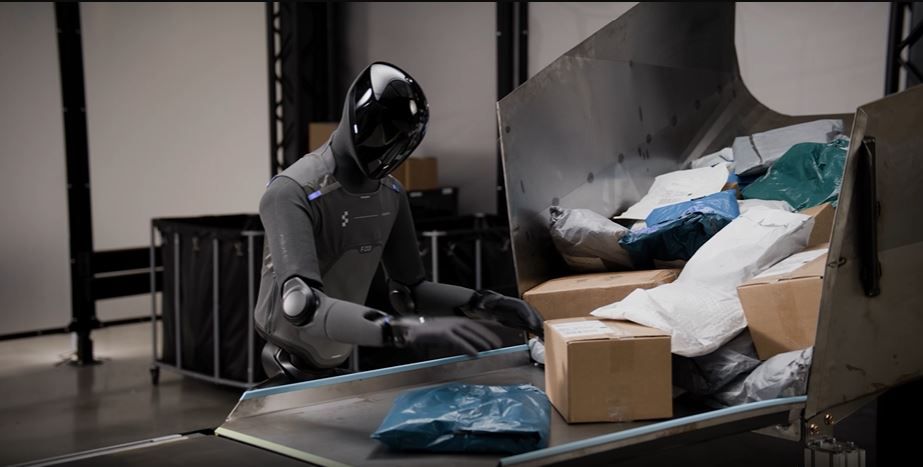Introduction
Figure 3, unveiled by Figure AI, is a full-scale humanoid robot engineered to work in the real world. Backed by $850 million from OpenAI, Microsoft, Nvidia, and Bezos Expeditions, this humanoid robot marks a turning point: it is no longer a research prototype but a physical infrastructure designed to extend AI agents into the physical world. Figure 3 integrates multimodal perception, language reasoning, and motion planning into an autonomous system capable of understanding natural-language commands and executing them without remote teleoperation.
Key Technical Innovations of Figure 3
Figure 3 introduces four critical innovations that distinguish it from previous humanoid robot models:
End-to-End AI Integration and Autonomy
Figure 3 performs multimodal perception and motion planning jointly, enabling it to "see, reason, and act" fully autonomously. Unlike earlier systems requiring remote teleoperation, this end-to-end approach eliminates latency and dependency on human intervention, creating a true physical agent capable of adapting to dynamic environments.
Voice and Vision Fusion
Powered by OpenAI's model stack, Figure 3 understands natural-language commands and translates them into concrete physical actions. Instructions like "tidy the desk" or "bring me that box" are interpreted and executed autonomously, without requiring complex programming or specialized interfaces.
Production Cost Reduction
Figure AI's new BotQ manufacturing facility has shifted from handcrafted production to injection-molded and die-cast components. This manufacturing leap targets reducing unit cost below $70,000, making the humanoid robot economically accessible across a wide range of industries.
Safety and Energy Management
Figure 3 integrates a new 2.3 kWh battery certified to UL 2271 standards and an advanced thermal management system. These upgrades address one of robotics' biggest obstacles: fire risk and thermal runaway during extended operations.
The Bigger Picture: Embodied Intelligence as the Next Platform
Figure 3 is not an isolated case but part of a deeper transformation in the AI landscape. The shift from text-based applications to humanoid robots represents a transition from "chat to motion." Tesla Optimus 2, progress from 1X Robotics, and OpenAI's strategic investment in Figure AI signal that the next chapter of technology concerns physical control of the real world, not just text generation.
According to Goldman Sachs, humanoid robotics could add $150 billion to global GDP by 2035, with early adoption concentrated in logistics, manufacturing, and domestic care. However, significant challenges remain: only 3–4 companies globally are close to scalable production, and mastery of yield, energy density, and safety will be decisive for commercial success.
Closed-Loop Learning Cycles
One of the most promising innovations in the field is the integration of closed-loop feedback cycles between simulation, policy learning, and real-world transfer. Recent research like PhysicalAgent (2025) and DreamWalker v2 replicate the same data flywheel mechanism that fueled the explosion of large language models. Humanoid robots learn from simulation, refine behavior, and transfer acquired skills into the physical world, creating a virtuous cycle of continuous improvement.
Why Figure 3 and Humanoid Robots Matter Today
Humanoid robots are no longer science fiction — they are becoming the execution layer of the physical world. If digital agents transformed online work, embodied agents will redefine offline work: in warehouses, homes, and factories. The competitive challenge of the coming decade will not be "GPT vs Claude" but who masters the bridge between code and physical motion.
"The humanoid race just got serious. Figure 3 positions robots as the physical extension of AI agents — where LLM reasoning meets the real world."
Figure AI, Press Release 2025
Economic Opportunities and Practical Limits
Economic opportunities are evident: from logistics management to domestic assistance, from manufacturing processes to household support. However, legitimate criticisms remain: demonstrations attract investors, but real-world field deployments are still limited and the operational cost per robot hour remains high. The market must navigate a maturation phase where investment enthusiasm meets hardware constraints and quality control realities.
Conclusion
Figure 3 represents a significant step toward the era of embodied intelligence. With end-to-end AI integration, natural language understanding, and declining production costs, Figure AI's humanoid robot opens concrete scenarios for physical automation in high-value sectors. The coming decade will not be defined by who has the best LLM, but by who controls the bridge between digital intelligence and physical action. Figure 3 is one of the first steps across that bridge.
